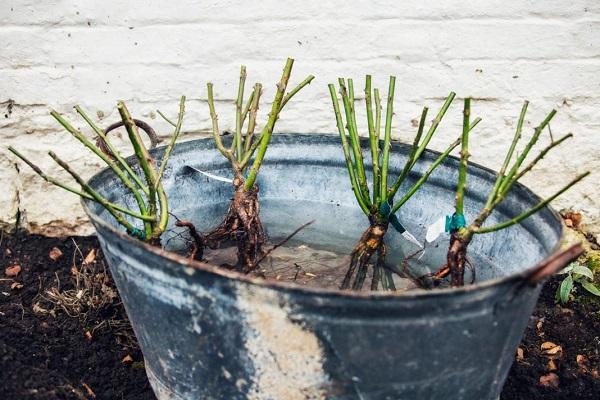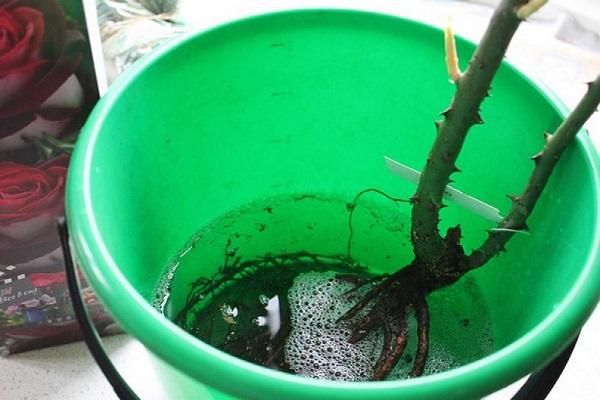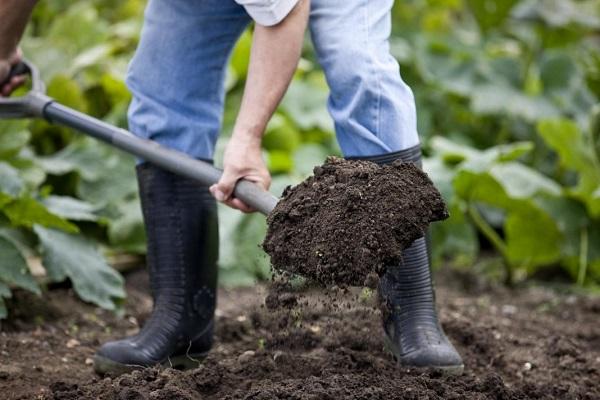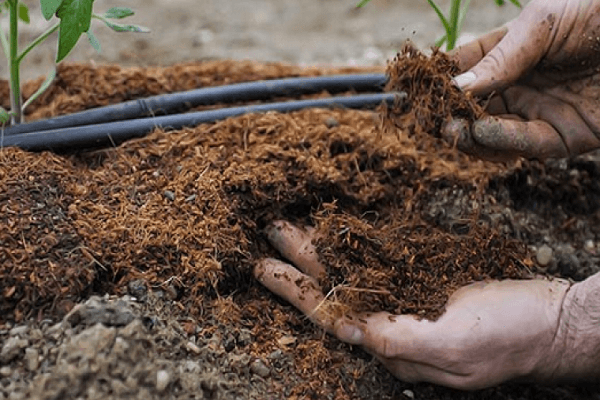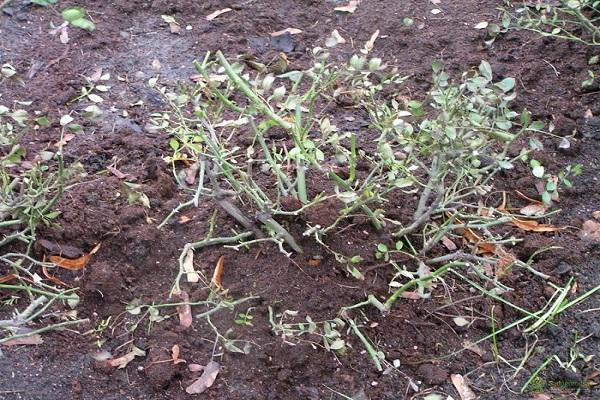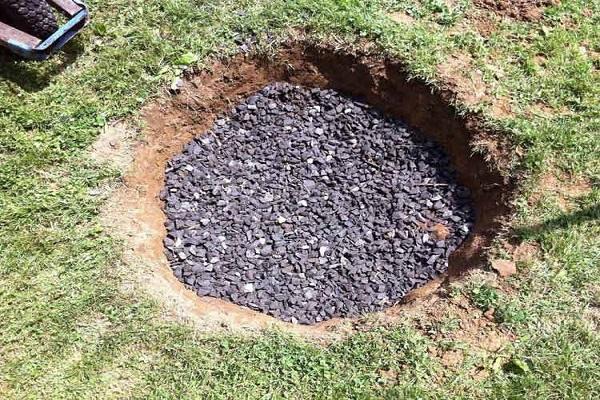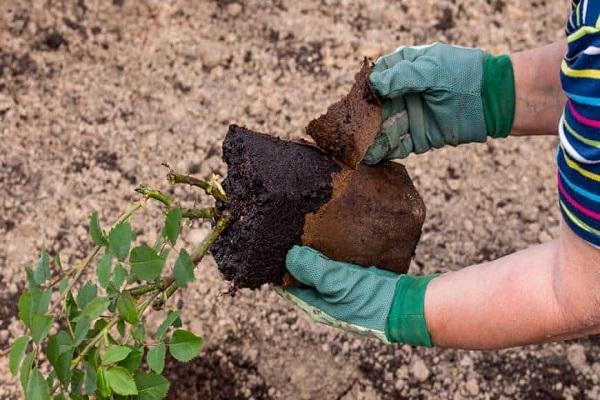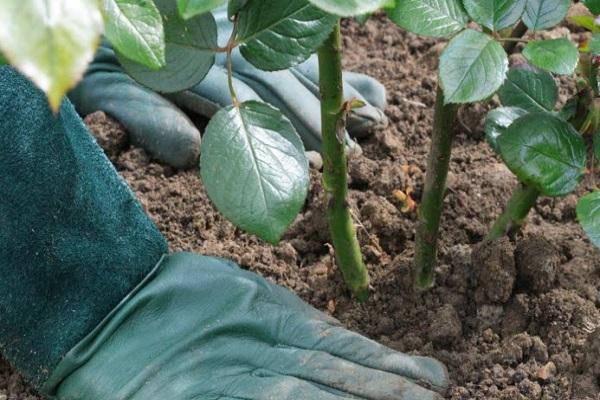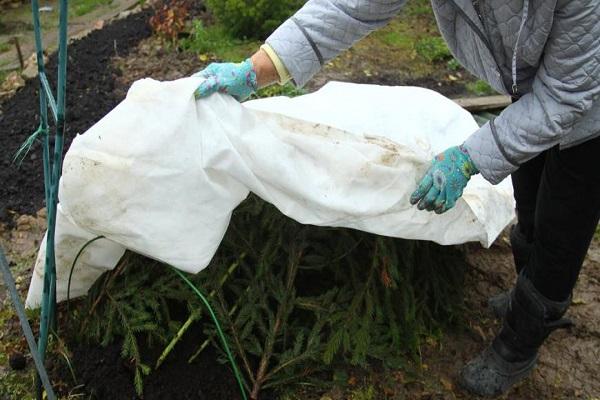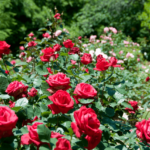The most comfortable time for planting roses is autumn. Weather conditions in the autumn months are favorable for the adaptation and rooting of the young plant. Thanks to frequent rains, there is no need to think about watering, and thanks to the moist air and soil warmed up over the summer, the roots quickly take root. But the success of autumn planting roses with an open root system depends not only on the weather, but also on the correctness of the gardener’s actions.
- What month is best to plant?
- Selection and preparation of planting material
- Site selection and soil preparation
- Step-by-step instructions for planting bare-root roses
- Optimal distance between bushes
- Preparation of planting holes
- Planting process
- Features of planting different types of roses
- How to care for roses after planting in the fall
- Possible problems
What month is best to plant?
Autumn weather changes quickly, so it is important to plant roses before the end of the favorable period. The optimal time for planting bushes with an open root system is September and early October. It is impossible to name the exact days, it all depends on the weather. It is important to complete planting at least 3 weeks before the arrival of autumn frosts so that the rose seedlings have time to adapt.
When choosing a planting time, take into account temperature conditions. It is advisable to plant roses on days when the daytime temperature is +12-15 °C, and the night temperature does not fall below +5 °C. Under such conditions, the roots will take root, but the buds will not wake up until spring.
The optimal timing for autumn planting of roses varies in different climatic regions:
- in the central zone - the second half of September, the first days of October;
- in the southern regions of Russia - during October;
- in Siberia, in the Urals - all September.
Selection and preparation of planting material
Saplings with an open root system are cheaper than roses with closed roots, but they need to be planted almost immediately after purchase.
When choosing seedlings in a gardening store, you need to inspect the root system. The roots should not be shrunken, rotten, unevenly colored, or developing disproportionately in different directions. A good seedling has at least 3 main shoots. Thorns and branches should be green, with a smooth shiny surface.
Before autumn planting, seedlings with bare roots are prepared: they are placed in a bucket filled with water for a day, then injured and withered branches are cut off. The leaves are also removed, and only 30 cm is left from the main shoots. The roots are cut off to 25 cm. Rotten and shriveled roots are removed completely.
For preventive purposes, it does not hurt to spray the seedlings with a 3% solution of iron sulfate. And for the roots, a mixture of cow dung (100 g) and clay (200 g) is made.
Site selection and soil preparation
The survival rate of roses in the autumn depends on the correct site chosen for planting. The capricious plant needs a lot of heat and sun. The area should be well lit. There may be shading from the north, the main thing is full illumination from the south. The selected location should be protected from strong winds.
You should not plant roses in the shade of trees and tall bushes.
Roses do not grow well in clay soil where there is excess moisture. The groundwater level at the site should be average. In lowlands where water stagnates, the roots of roses will quickly rot.
Optimal soil for rose bushes:
- loose;
- rich in mineral and organic substances;
- slightly acidic.
The site chosen for autumn planting is prepared in advance, in spring or summer. The minimum period is one month before planting the roses. The soil is carefully dug up and mineral fertilizing is applied:
- for sandy soil humus and peat (a bucket per 1 m2);
- for clay - sand, humus, turf (also a bucket per 1 m2);
- for sour - dolomite or ash;
- for alkaline – peat or iron sulfate.
Step-by-step instructions for planting bare-root roses
For successful rooting of roses, for their rapid adaptation before the winter cold, it is important to follow the rules of autumn planting.
Optimal distance between bushes
It is important to plant roses at a certain distance from each other. Moreover, the distance is measured before digging the planting holes. If the bushes are located too close, a microclimate is created that provokes the development of infectious diseases.And it is more difficult to care for thickened plantings.
The optimal distance between bushes is not the same for different varieties of roses:
- for tea hybrids – 40-60 cm;
- for climbing plants – 100-120 cm;
- for semi-climbing plants – 80-100 cm;
- for floribunda – 30-50 cm;
- for dwarf borders - about 30 cm;
- for polyanthus – 40-60 cm;
- for English - about 50 cm.
Preparation of planting holes
Planting holes are prepared 2-3 weeks before the autumn planting of roses:
- Dig holes 60-70 cm deep and 40 cm in diameter.
- They make drainage, put brick chips, expanded clay, and pebbles on the bottom.
- Fertile soil is poured on top of the drainage layer.
To further fill the hole, make a nutrient substrate in advance: add 8 kg of mullein, 25 g of superphosphate, 10 g of potassium to the dug soil. All components are mixed.
Planting process
Roses with an open root system are planted in the autumn in accordance with the step-by-step instructions below:
- The seedling is placed on a soil mound poured at the bottom of the hole. Straighten the roots so that they do not point upward. The root collar should be 3-4 cm below the soil surface.
- Holding the seedling, carefully pour the prepared nutrient substrate into the hole. The plant is carefully shaken so that the soil is compacted and there are no voids left between the roots.
- The covered earth is lightly pressed down with your hands. Dig a ring-shaped hole for watering around the bush.
- The plant is watered abundantly (2 buckets of water per bush). Water is poured slowly so that it is all absorbed into the ground and does not spread over the surface. Do not allow drops of water to fall on the shoots.
- After watering, check the level of the root collar. It happens that the ground sags from moisture and the neck becomes exposed.In this case, add the required amount of substrate.
Features of planting different types of roses
Almost all varieties of roses are planted in the autumn according to the above scheme. But there are exceptions:
- Standard roses with bare roots are planted at an angle of 45°. This will prevent damage to the trunk during the process of bending it down for shelter for the winter. Moreover, the bush should be inclined to the same side into which the trunk will be bent. The main thing is that the slope is not directed towards paths, curbs and other hard surfaces.
- Climbing roses are buried so that the root collar is 8-10 cm below the soil surface. The bushes are planted near a support. Moreover, the distance from the plant to the support should be about 30 cm.
How to care for roses after planting in the fall
For successful rooting of roses planted in the autumn, it is important to properly care for them. Care includes the following activities:
- Mulching prevents the appearance of crusty deposits on the soil surface after watering. Mulch retains moisture in the soil, preventing the roots from overheating on hot days and freezing on cold days. For mulching, humus or peat is used and placed in a layer of 8-10 cm.
- Loosening is used after watering and precipitation in the absence of mulch. The procedure also prevents the formation of a crust on the soil surface.
- The shelter is installed after regular autumn frosts have established. Agrofibre or spruce paws are used as covering material.
If the autumn months are rainy, then there is no need to water the roses. Watering is carried out only in dry weather.
Possible problems
When planting roses with bare roots in autumn, the following errors are possible:
- Exceeding the depth of the root collar in the soil. As a result, the bush withers and dies.
- Planting roses in peat soil, which is characterized by excess moisture. In such conditions, the roots rot and die. The optimal type of soil for planting roses is loam. It is airy, rich in nutrients, and does not retain moisture.
- Incorrect placement of roots in the planting hole. In order for the bush to take root faster and survive the winter cold without problems, the roots must be carefully straightened. Due to the incorrect location of the roots, the plant has a stunted appearance and grows poorly.
- Using cold water for irrigation leads to the death of the root system.
- Insufficient compaction of the soil, formation of voids between the roots. When watering, the earth will settle; adding substrate will be required to level the surface.
If roses with bare roots were purchased late, the optimal time for autumn planting has passed, then there is no need to rush to place the seedlings in the open ground. It is better to dig them into the substrate in the greenhouse before spring, slightly tilting them above the soil surface, cover them with spruce paws or peat when frost arrives, and cover them with snow in winter.
You can also save roses until spring in the basement, where the temperature is about 0 °C, and when the weather warms up, plant them in a permanent place.

